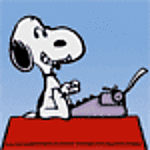1⁄35The 'Renee Ann', a beautiful F4U-1A

Painting/Decals/Weathering
Painting
The model is painted exclusively in
Testor's Model Master enamel paints. I chose to paint the cockpit in one of the
options I have seen in books for Corsair cockpits. The cockpit is black on the
upper portions from the side consoles and up. I used Interior Black as the
primary black color of the upper cockpit and highlighted it with true black and
various dark grays. The lower cockpit is Interior Green (F.S.34151) from just
below the side consoles and down. I did washes in black and brown and dry
brushed the green portions using Israeli Green (F.S.34227).
The camouflage is the standard three-tone camouflage of Non-Specular Sea Blue
(F.S.35042) on the top sides, Intermediate Blue (F.S.35164) on the vertical
surfaces, and Gloss White on the bottom. I cut the two top colors with 25% white
to represent heavy weathering. For the same reason, I substituted Light Gray
(F.S.36495) for the white on the bottom.
To further simulate the effects of heavy weathering, I thinned down some of the Light Gray to a nearly transparent mixture and applied a light overcoat to the fabric covered wing and tail surfaces to further lighten these areas. I found the effect very appealing, especially on the vertical tail.









